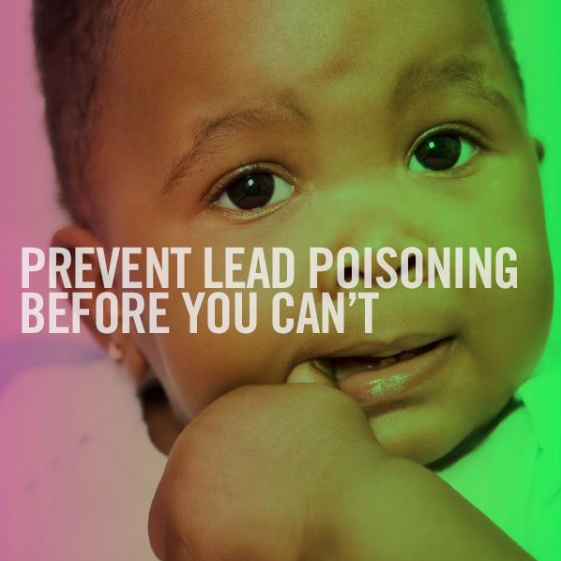Nearly half a million children living in the United States have elevated blood lead levels that may cause significant damage to their health, according to the federal Centers for Disease Control.
No amount of lead is safe for the body.
- Editor’s note: This article is taken from a news release from the Connecticut Department of Public Health and from various parts of the department’s Web pages on preventing lead poisoning. There is no known safe level of lead, and yet it’s in most older houses and in older water pipes. Lead accumulates in the body and degrades brain functioning. Children living in older houses are particularly susceptible, but they can be protected.
The most common source of childhood lead poisoning is lead paint found in houses built before 1978, however there are other sources too.
Major sources of lead exposure to children include lead-based paint and lead-contaminated dust in deteriorating buildings.
Children can also be exposed to lead from additional sources, including take-home exposures from a workplace and lead in soil.
Is Your Child at Risk from Lead?
—from the department’s “Lead Poisoning Prevention Fact Sheet“
Is Your Child At Risk For Lead Poisoning? If you answer yes to any of these questions you may want to have your child tested, even if your child is older.
- Does your child live in or often visit a building built before 1960?
- Does your child live in or often visit a building built before 1978 that is being or was just repaired or remodeled?
- Does your child live in or often visit a building that has peeling or chipping paint?
- Does your child live with an adult or often visit an adult whose job or hobby exposes them to lead?
- Does your family eat or drink from dishes made outside the U.S.?
- Does your family use home remedies?
Lead paint use was banned in the United States in 1978.
While the prevalence and incidence rates of lead poisoned children in Connecticut have been decreasing over the past 15 years, due to mandatory childhood screening and primary prevention efforts, the state’s housing stock is among the oldest in the country, and many houses still contain lead paint hazards that have the potential to poison children.
Department of Public Health data shows that Black and Hispanic children in Connecticut are at greater risk of being lead poisoned.
For everyone living in a home or apartment built before 1978, it is important to understand the steps that should be taken to protect children from lead poisoning.
Lead Poisoning Prevention Week
The Connecticut Department of Public Health, along with the U.S. Centers for Disease Control, the U.S. Environmental Protection Agency, and the U.S. Department of Housing and Urban Development, recognizes National Lead Poisoning Prevention Week, Oct. 21- to 27.
“This year’s Lead Poisoning Prevention theme, ‘Lead-Free Kids for a Healthy Future,’ highlights the importance of testing your child, developing an awareness of lead paint hazards in your home and learning how to prevent lead poisoning’s serious health effects,” said Krista Veneziano, supervisor of the department’s Lead, Radon and Healthy Homes Program.
Lead Poisoning Prevention Week is dedicated to actions that address health effects of lead exposure and increase awareness of childhood lead poisoning prevention. Despite the continued presence of lead in the environment, lead poisoning is entirely preventable.
Here are some simple things parents can do to help protect their family from lead exposure:
—Get Your Child Tested. Even if your young children seem healthy, ask your doctor to test them for lead. Mandatory screening is the law in Connecticut.
—Learn About Drinking Water. Water pipes in some older homes may contain lead solder where lead may leach out into the water.
—Understand the Facts! DPH can provide you with helpful information about preventing childhood lead poisoning.
For more information visit ct.gov/PreventLead, or for Spanish educational materials please visit ct.gov/plomo, or contact the department’s Lead, Radon and Healthy Homes Program at (860) 509-7299.
Brochures on topics about lead poisoning from the state Department of Public Health:
- Lead Poisoning Prevention Fact Sheet
- Eating Right Helps Fight Lead Poisoning
- Lead in Drinking Water Fact Sheet
- Lead: an invisible enemy that can affect the health of your child
- Reducing Lead Hazards in the Home and Cleaning Tips
- Quick Tips: Reduce Lead Hazards
- Quick Tips: Prevent Lead Dust Inside and Out
- Quick Tips: Cleaning Lead Dust
- Quick Tips: Seven Facts About Lead-Based Paint
Facts About Lead-Based Paint and Lead Dust
From one of the state brochures on preventing lead poisoning:
FACT #1 The use of lead paint in homes was banned in 1978. Homes built before 1978 may contain lead paint. Older homes, built before 1950, are very likely to contain lead paint.
FACT #2 Lead dust is produced from lead paint. As the paint gets older, it may be damaged by moisture or friction if it’s disturbed.
FACT #3 Lead dust is very fine; it cannot be seen.
FACT #4 Lead dust is the most common source of lead poisoning for everyone, especially children and pets. Children between the ages of one and two are at the greatest risk for being poisoned.
FACT #5 Lead poisoning usually occurs when children put lead dust in their mouths after touching it. Lead dust can be found on many surfaces such as windowsills, floors and even toys. When children put these surfaces in their mouths, they are putting lead dust in their mouths as well.
FACT #6 Children may also eat chips of lead paint. The paint chips come from household lead paint, as on old windows or porches, or from paint chips in bare soil in the yard.
FACT #7 Your local health department will try to find where the lead paint and lead hazards are found in your home. With this information they can determine whether the lead hazards in your home should be removed or managed.
PREVENT LEAD POISONING BEFORE YOU CAN’T.

